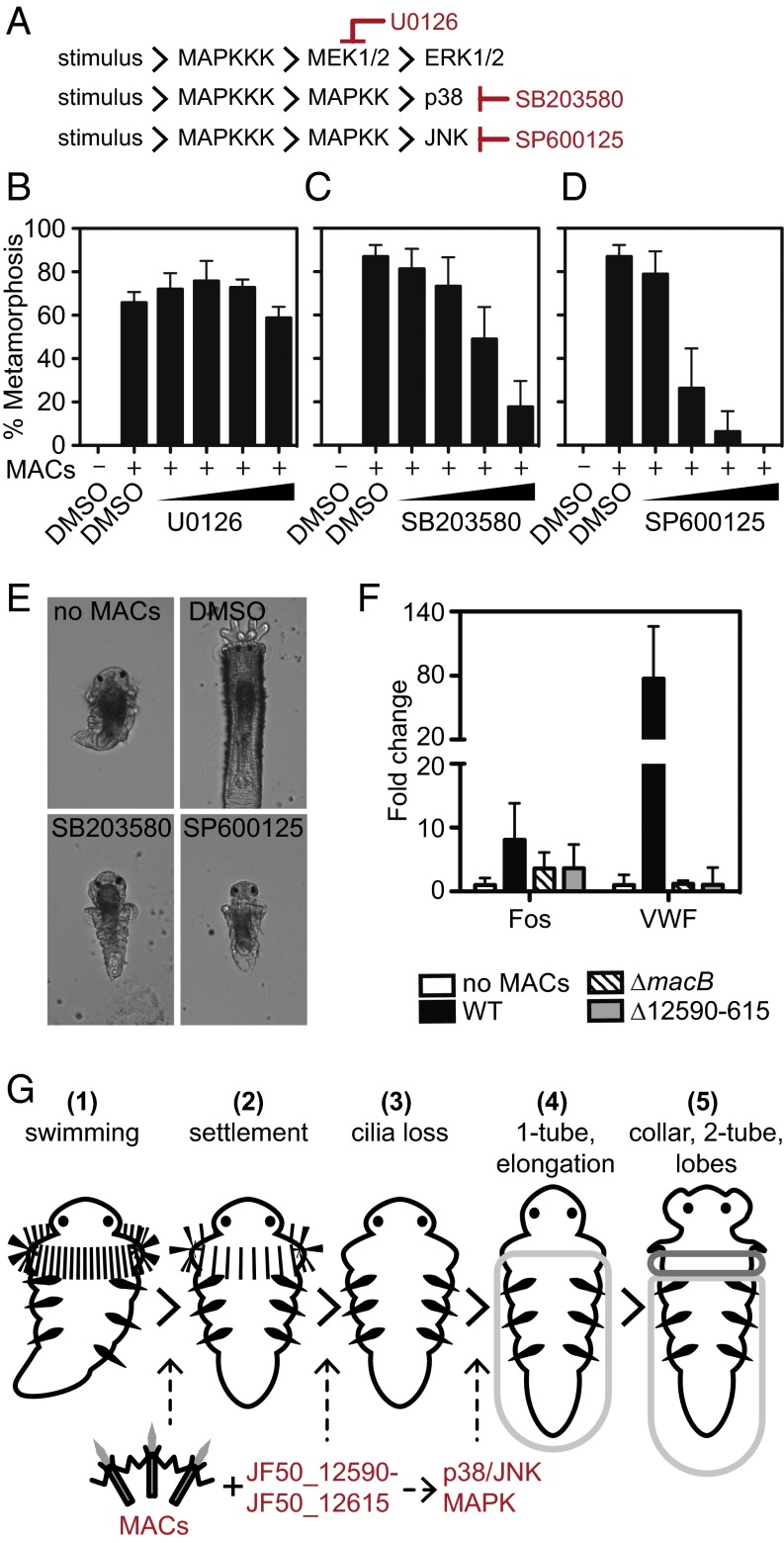Fig. 3.
Bacterial MACs and MAPK signaling regulate distinct steps of metamorphosis. (A) Components of the MAPK pathway identified in the genome of Hydroides. (B–D) Metamorphosis of Hydroides in the presence of the MEK inhibitor U0126 (B), p38 inhibitor SB203580 (C), or JNK inhibitor SP600125 (D). Larvae were pretreated with inhibitor for 2 h at 0.25, 1.0, 2.5, or 10 µM and induced to metamorphose with MACs. Solvent-only (DMSO) treatments are shown as controls. Error bars indicate SDs of eight biological replicates. (E) Representative images of larvae pretreated with the p38 inhibitor SB203580 or JNK inhibitor SP600125 for 2 h and induced to metamorphose with MACs for 24 h. Larvae without inhibitor and MACs (no MACs) or larvae treated with solvent and MACs (DMSO) are shown. (F) Fold change of Fos (TCONS_00100867) and VWF (TCONS_00123609) genes from larvae after a 30-min exposure to MACs from wild-type, ∆macB, or ∆12590–615 strains relative to unexposed larvae. (G) Timeline of metamorphic events in response to MACs: free-swimming competent larvae (1); MACs induce settlement behavior (2); with the JF50_12590–JF50_12615 region, MACs induce the irreversible initiation of metamorphosis (cilia loss) and activate metamorphosis-associated transcription (3); larvae produce a primary proteinaceous tube (1-tube) and their body elongates (4); larvae evert their collar, larvae produce a calcareous secondary tube (2-tube), and branchial lobes form (5). p38 and JNK MAPK signaling mediate body elongation, primary and secondary tube formation, and branchial lobe formation.

